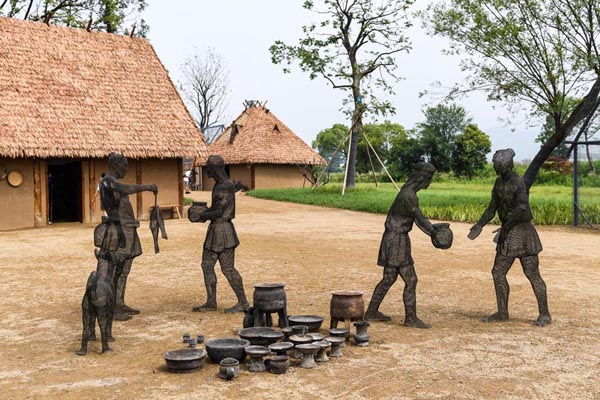 |
|
A park in Liangzhu features ruins. It opened for online registrations on Sunday. [PHOTO BY WANG CHUAN/FOR CHINA DAILY] |
However, thousands of years of human activity in the area have significantly altered the landscape at the huge site. Liu's team used a drone and a satellite remote-sensing map to draft the terrain and layout of the city.
"Sometimes, we stood on the center terrace and imagined we were kings back then. We asked ourselves how we would design the city," Liu recalled.
In 2007, excavation work uncovered earthen city walls that ranged in width from 20 to 100 meters, with stone foundations.
The city also faced a population crisis, with remains of residences found on its walls showing that people needed more living space. A 50-m-wide canal in the city gradually shrank to 20 m because residents kept dumping their rubbish there.
"Our understanding of Liangzhu city has continually improved due to step-by-step archaeological studies," Liu said. "After years of investigation in the area, we connected the individual spots to form a big picture."
Chen Tongbin, director of the Institute of Architectural History affiliated to the China Architecture Design & Research Group, estimates that 10 million cubic meters of earth were used to construct Liangzhu city and the dam system. Chen is the main drafter of the bidding document for the Archaeological Ruins of Liangzhu City seeking World Heritage status.
In comparison, she said that when the ancient Egyptians built the three giant pyramids at Giza, stones were used to cover 5 million cubic meters.
"Of course, it is more challenging to build with stones," she said. "But construction in Liangzhu was exceptionally massive and may have taken 4,000 people working for a decade.